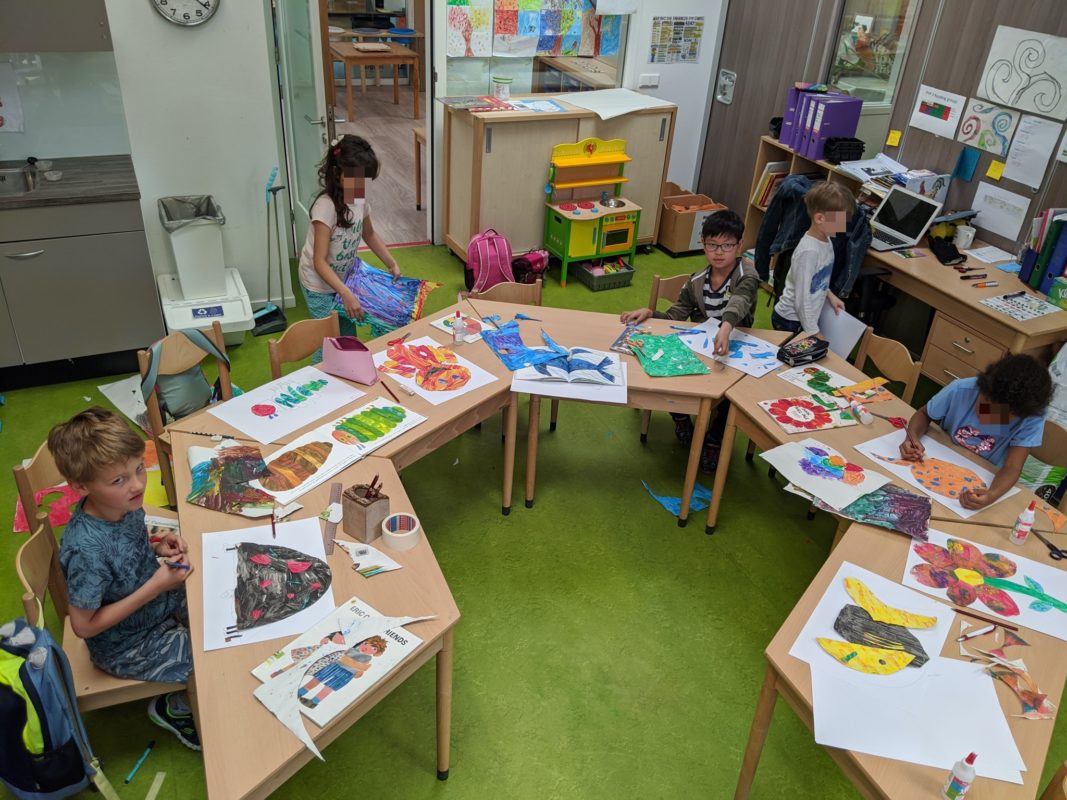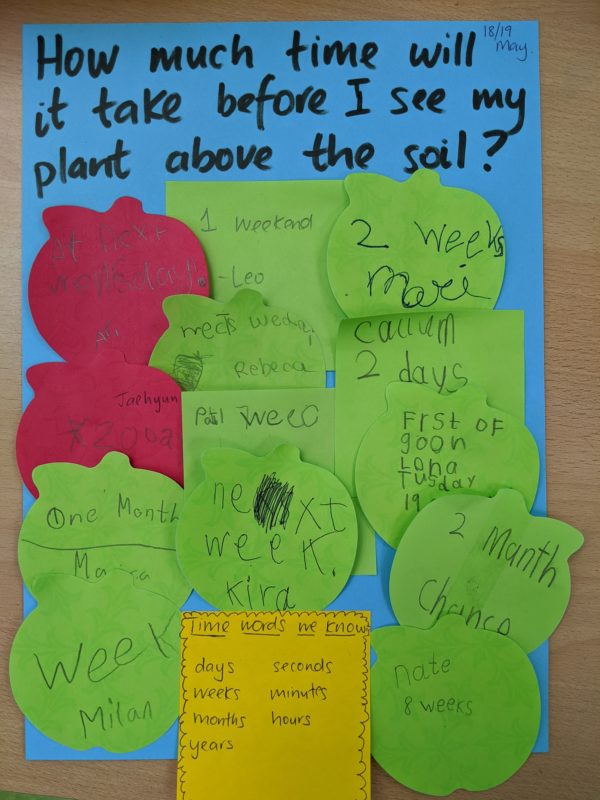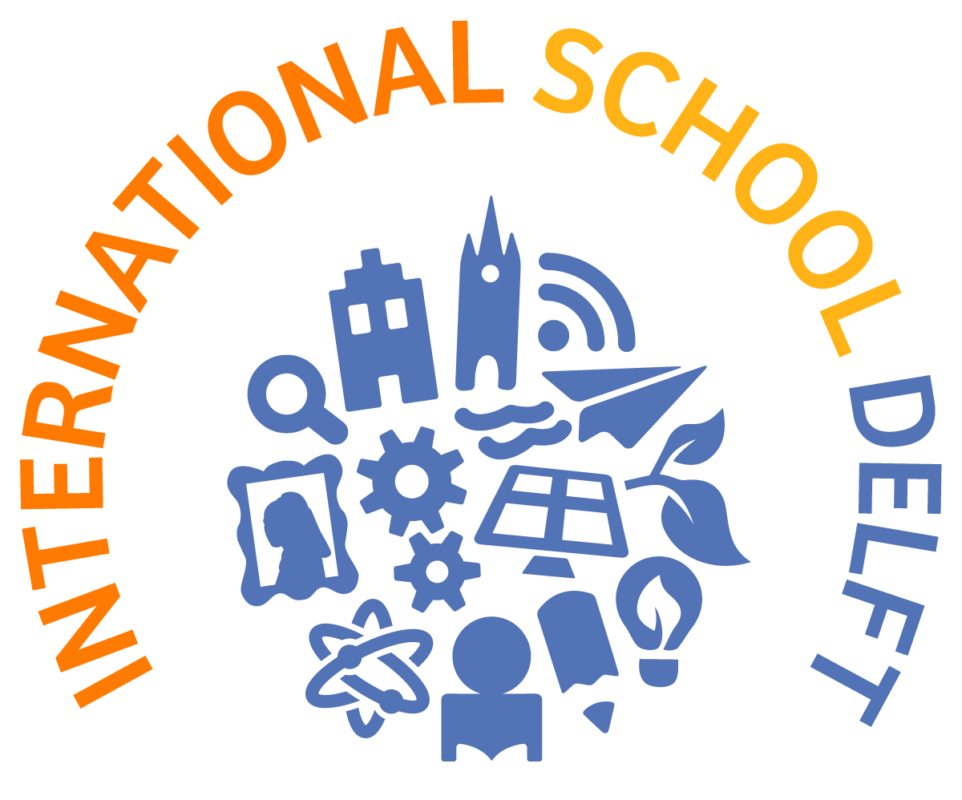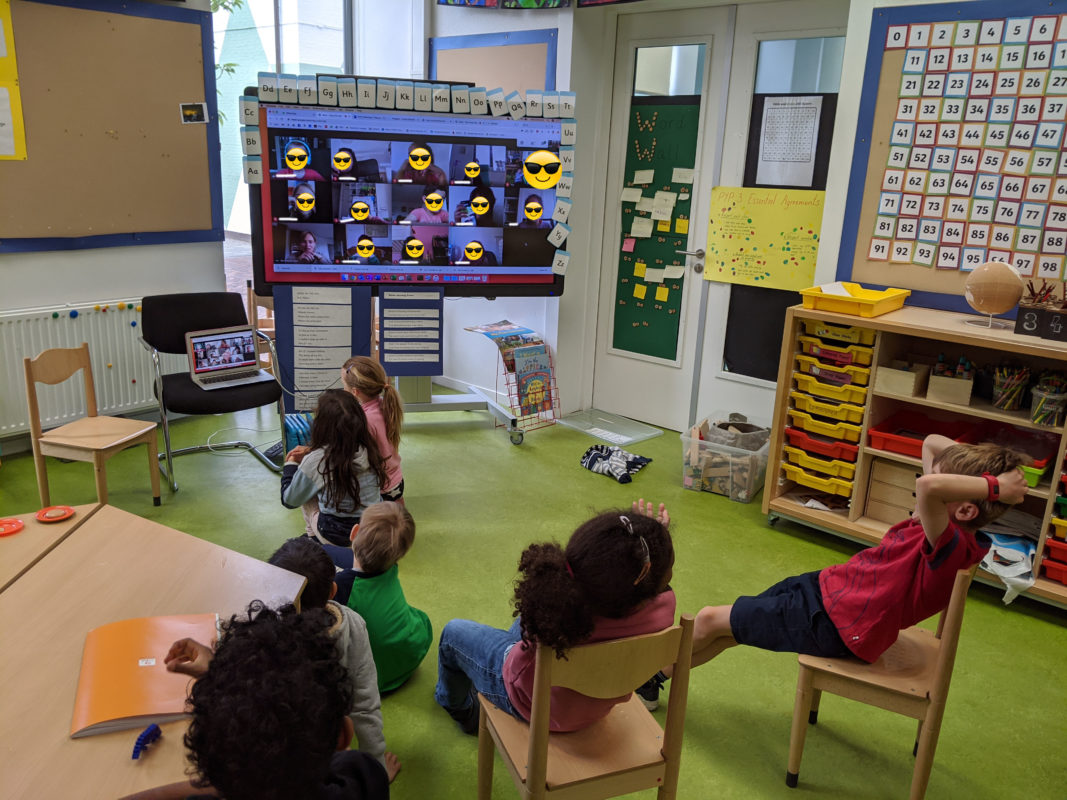Contribution by: PYP 3 teacher Elle Cox
One of the many lessons we have learned or been reminded of during this unusual “Corona-time” is that school is much, much more than just a place of knowledge acquisition. Being together in the class again highlights how invaluable schools are for socialization. The students of PYP 3 show their resilience and open-mindedness as they return to school, leaving behind a phase of remote learning, and beginning the new phase “blended learning”.
Remote learning programme
Being forced to establish and participate in, a relevant and effective remote learning programme in a very short timeframe was a challenge for teachers, students and their parents. At first, the novelty of posting completed assignments to Seesaw hadn’t worn off, and more time at home with their families was nourishing their soul.
But quickly, through weekly one-on-one, small group and whole class video meetings, the students expressed that they had more difficulty and less enjoyment completing projects remotely. The tasks were the same as what we would provide to facilitate learning in the class, so what was missing?
The kids in PYP3 are a creative, thoughtful, curious and energetic bunch. Twenty-one magnificent minds in fast-growing bodies. They are all unique, but together, we have grown into a family, a real learning community.
Missing social interactions
What was missing in the recipe for a remote learning programme, was the magic ingredient of social interaction. Within the bubble of their homes, the children didn’t have access to the differing attitudes, values and actions of their peers. Working collaboratively is a large part of our learning, so whether they are aware of it or not, the students are constantly learning from each other. The welcome distraction of a friend telling you a Pokémon fact during guided reading, someone offering to share their new fancy zig-zag scissors, seeing the products of other student’s work; all of these provide perspective, but more importantly, a break for the brain. PYP3 brains need regular, social and physical opportunities for having a break from formal learning to be more efficient.
So, with Mr. Rutte announcing schools would be reopening, teachers and students were excited to be back to normal. But…it isn’t quite normal. We have half days, with half classes and there are still assignments to be completed remotely. Some students are continuing 100% of their learning remotely. How can we maximize opportunities to support the social emotional development of all our students as we begin this new phase: blended learning?
Back in school – start of blended learning

During the first week back, students were provided with the same workload of online inquiry activities. The kids at school had lots of opportunities to play. We established a dinosaur café (Ms Elle paid the bill), created a village accessible only by rail, swung on the Willow tree, sung parachute songs and started an Eric Carle inspired art project. The children shared their new stationary and rather than sharing tales of their Corona-lockdown experience as many adults might, they just got on with school life, sprinkling the morning with giggles of “I love being back at school”. We washed our hands a lot, discovered that the disinfectant wipes made the classroom smell lovely and inquired into what 1.5m really looks like.


Before school closed, our unit focused on weather and seasons which links perfectly to the children’s current unit of inquiry: “Living things grow and change”.
We had started a daily photo project, looking to observe changes in the environment as the season changed from winter to spring. Despite the 8-week gap, the kids decided to continue that project because they were interested in what might happen next. They love the independence of taking the pictures and reporting back to each other every morning. Apart from leaves changing they have also noticed things like “more people wear black in the winter”, “the wind always blows our tree the same way”.
Planting seeds – from home to classroom project


During the remote learning period, we sent the students seeds to plant and grow. What was their responsibility? How would they care for the plant? To reinforce these ideas and establish a communal project in the classroom, we have been planting! Firstly beans (on cotton wool), to try to learn more about how roots grow and shoots appear, and sunflower seeds, which we are linking to our maths inquiry; estimating and measuring time and length.
Looking to the future, later this week, we have a video interview with a sheep farmer in the USA. The children read some books about sheep and came up with some questions for the farmer! No doubt, the interview will further stimulate the children’s inquisitiveness and lead to more questions and rich discussion.
So, in a few short months, we have gone from “just going to school”, to remote learning and now blended learning is our current “new normal”. So far, it seems to make the most of the advantages of face-to-face interaction between students and their teachers and using technology to continue learning remotely. We are so grateful for the incredible kids and their supportive parents through this adventure so far.

